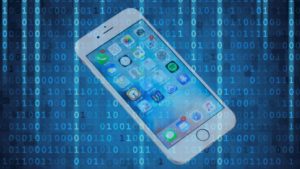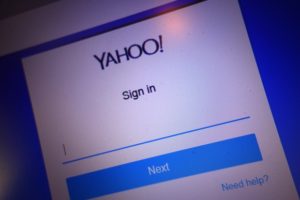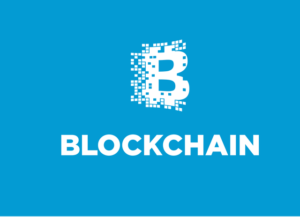
If you haven’t done so already, go and update your iPhone, iPad or iPod touch to iOS 9.3.5 right now. To update, go to Settings > General > Software Update.
It may not seem urgent because it’s only a “point release,” but the update is crucial or you risk having all of your data secretly stolen by invisible malware that can install itself on your device and even uninstall itself without leaving any traces behind.
Two reports from the New York Times and Motherboard published on Thursday detail how three major security holes, patched via the update, could be exploited by hackers to track and steal practically all of the private data on your iOS device.
According to both reports, Ahmed Mansoor, a human rights activist from the United Arab Emirates, discovered the vulnerabilities when he received a suspicious text message with a link that would have provided “new secrets about torture of Emiratis in state prisons.”
Had Mansoor clicked on the link, he would have been directed to a website that would have exploited all three security holes and installed malware onto his iPhone, giving remote hackers full access to his device.
Thankfully, Mansoor didn’t click the link. Instead, he alerted Citizen Lab, an interdisciplinary lab based at the Munk School of Global Affairs at the University of Toronto that focuses its research on the intersection of human rights and security.
Citizen Lab identified the link as belonging to NSO Group, an Israel-based “cyberwar” company reportedly owned by American venture capital firm Francisco Partners Management, which sells spyware solutions to government agencies.
Along with additional research from cybersecurity firm Lookout, it has been revealed the three exploits (dubbed “Trident”) are “zero-day” level, meaning the malware kicks in immediately as soon as it’s activated (in this case, once the link is opened, the malware automatically installs itself and starts tracking everything).
“Once infected, Mansoor’s phone would have become a digital spy in his pocket, capable of employing his iPhone’s camera and microphone to snoop on activity in the vicinity of the device, recording his WhatsApp and Viber calls, logging messages sent in mobile chat apps, and tracking his movements,” writes Bill Marczak and John Scott-Railton, two Citizen Lab senior researchers.
According to Lookout, the software is highly flexible and can be configured in a number of ways to target different countries and apps:
The spyware capabilities include accessing messages, calls, emails, logs, and more from apps including Gmail, Facebook, Skype, WhatsApp, Viber, FaceTime, Calendar, Line, Mail.Ru, WeChat, SS, Tango, and others. The kit appears to persist even when the device software is updated and can update itself to easily replace exploits if they become obsolete.
Upon discovery, the two organizations immediately notified Apple and the iPhone maker immediately got to work on iOS 9.3.5, which was released on Thursday.
Though Trident and the type of malware NSO sells (called “Pegasus”) is mainly used by governments to target dissidents, activists and journalists in volatile countries like United Arab Emirates, Mexico, Kenya, Mozambique, Yemen and Turkey, it can be used to target any iOS device.
The very idea of having all your data stolen without any real effort should scare everyone into updating their iOS devices.
As we’ve entrusted our smartphones and tablets with more and more of our personal data, it’s more important than ever to always be running the latest software with the most up-to-date security patches to prevent digital spying and theft.
Quicker to protect iOS than Android
It took 10 days for Apple to release an update to close the holes after Citizen Lab and Lookout alerted the company.
Ten days may seem like a long time, but when you compare it to how long it would take for Android devices to get updated for such a critical patch, it’s like hyper speed.
One of the benefits of iOS is its tightly-integrated software and hardware. Because there are fewer devices and they all run the same core software, Apple can test and deploy security updates quickly and easily with fewer chances of something going wrong.
Android, on the hand, is fragmented into tens of thousands of distinct devices, and customized in too many versions for even the most diehard Android fan to remember. This makes it extremely challenging for phone makers to test and release updates to plug up dangerous security holes quickly.
Google’s Nexus devices are quicker to get software updates because they all run stock Android and Google can push them out in a similar way to Apple. Same goes for Samsung and its Galaxy phones.
But there’s often little incentive for Android phone makers to update their devices. Software maintenance is costly and that’s why you’ll see many Android devices from lesser-known brands either update their phones months or years later or never at all.
No platforms are ever truly secure
The publishing of the security flaws and how serious it could be if you were to fall victim invites another conversation: media portrayal.
Android bears the brunt when it comes to being portrayed as the less secure platform, but as this revelation has revealed, no matter which platform is really more secure, all platforms are susceptible to hackers.
Security is an ongoing and never-ending battle between phone makers like Apple and Google and hackers. It’s a constant cat-and-mouse game where each side is always one step ahead or behind the other.
Had Mansoor not alerted Citizen Lab, the Trident exploit would have continued to exist without anyone knowing. Lookout believes the malware has existed since iOS 7. NSO Group’s Pegasus malware can also be used to target Android and BlackBerry devices, too.
While no platform will ever be truly secure, updating to the latest version of your phone’s software is the best way to remain safe.











